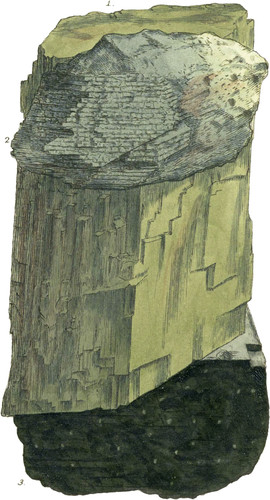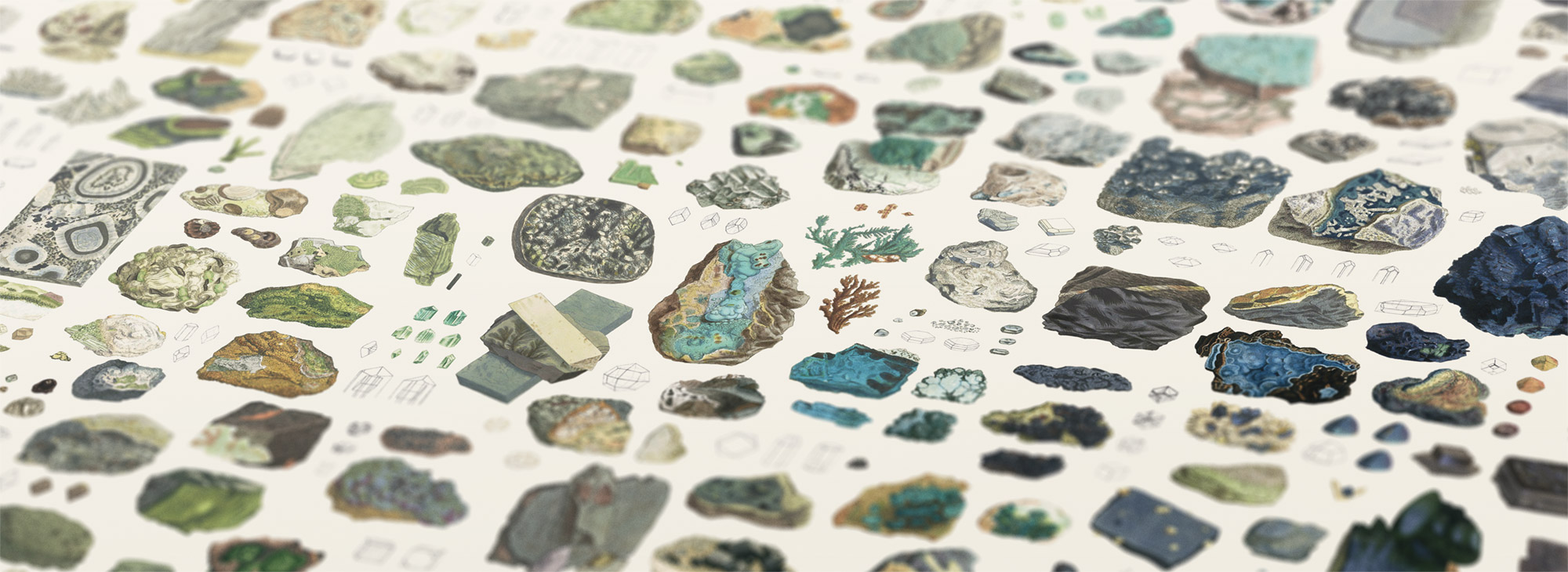 Enlarge
Enlarge
British Mineralogy
Pitchstone var. laminated
Pitchstone in lamellar concretions was first found by Professor Jameson, forming a vein in Granite, in the Isle Arran, it has since been found at Newry of a more open structure, approaching to columnar, also traversing granite; of this the following account is taken from a paper of Dr. Fitton’s in the Geological Transactions:---“The vein is first observable in the township of Newry at the bottom of a bank of Granite, above half a mile from the northern end of the town, on the right of the road leading to Downpatrick; it crosses the road and runs due westward, ending on tile side of the great road from Newry to Belfast. Its length, so far as hitherto observed, is half a mile. The rock, which is covered with mould to the depth of about a foot, consists of grey Granite; the vein is about two feet and a half or two and a quarter in width ; at the places of contact both the Granite and Pitchstone are disintegrated, the latter being almost as soil as Clay, but becoming gradually harder as it approaches the centre of the vein. The structure of the vein is foliated, the folia being perpendicular to the horizon and also to the walls, and besides these there are seams, that run longitudinally, parallel to the horizon, and nearly perpendicular to the folia.”*
The first figure exhibits a specimen from the interior of the vein of Newry, it is easily divided into irregular, but commonly four-sided prisms, their sides often concave, and their ends showing the vitreous fracture, with several small vesicles, scarcely visible, except with a lense; a few white semitransparent crystals of Feldspar are scattered through it. Fig. 2 represents a specimen from the side of the vein were it unites with the granite, its laminæ; are smaller; its surface quite dull, and its fracture approaches to earthy; it has altogether more the appearance of a Clay stone porphyry than of a Pitchstone. Both of these are from the extensive Geological collection of G. B. Greenough, Esq.
Fig. 3 shows the variety from Arran, it is a much more perfect Pitchstone than cither of the others, being of a more glassy texture and less easily divisible into plates, and scarcely at all into prisms, it is also of a much deeper colour; I have it by favour of Mr. P. Neill with other interesting specimens.
- * Trans. of Geological Society, Vol. 1. 278.

